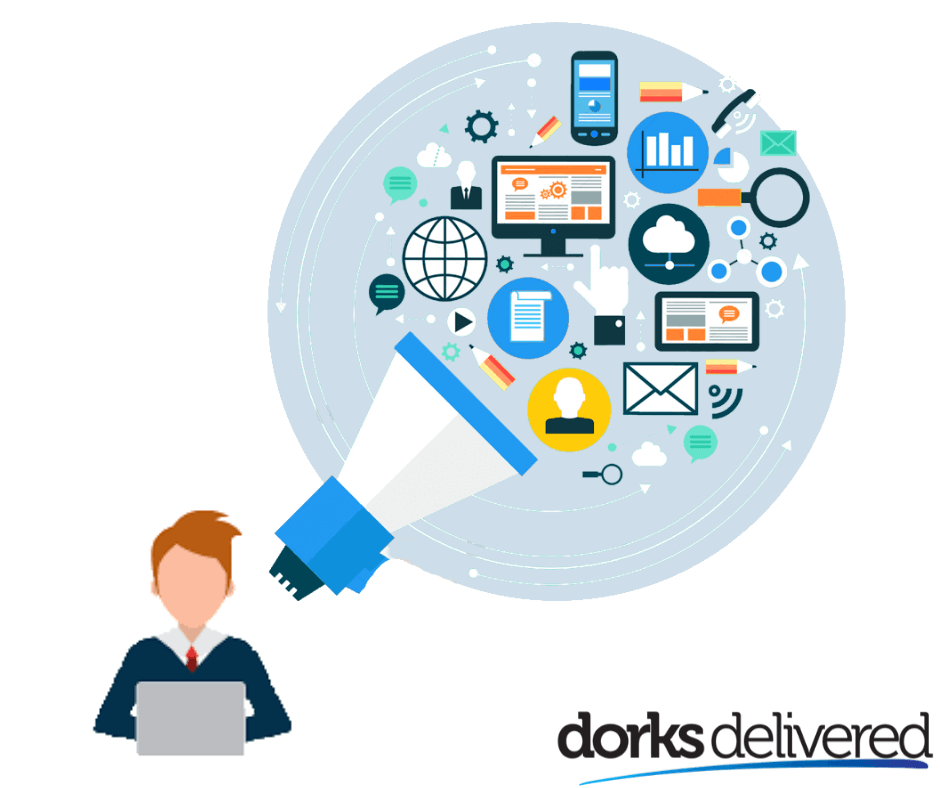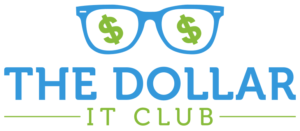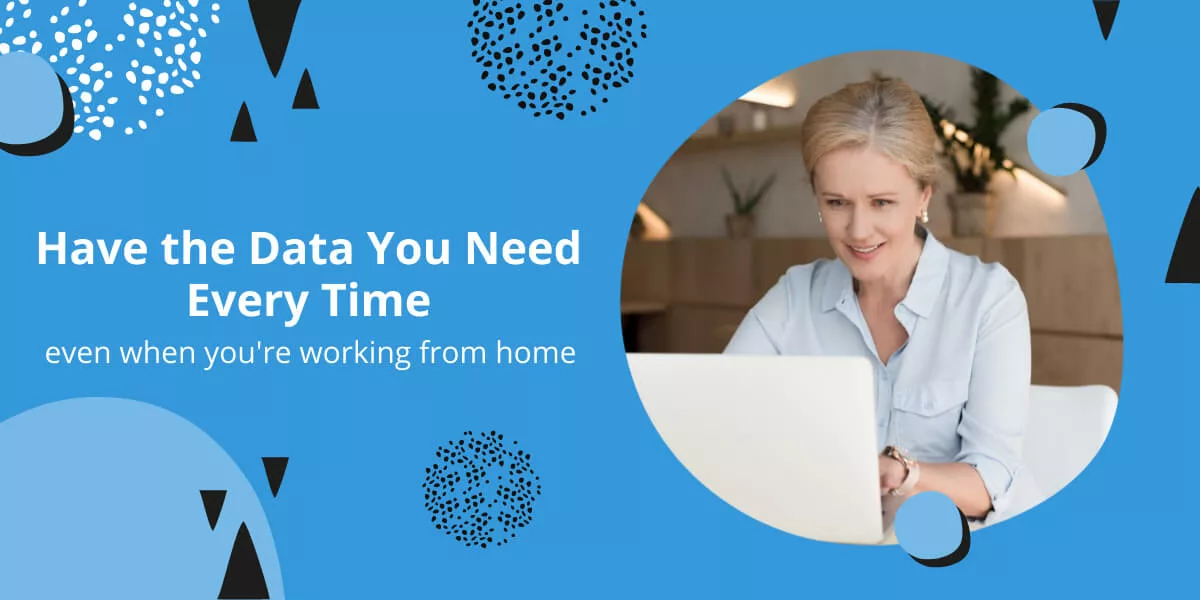Are your products overpriced? Does your service cost too much or too little? Most entrepreneurs will have that problem with pricing. How do we set our prices or rates? Is it what would cost us plus a percentage or do we look into the wilderness to see what our competitors have in there? Perhaps there’s a formula to doing it right. Courtney Deagon, pricing expert and the CEO of Court & Co Value Group Pty Ltd, shares with us some great tips on setting the prices of our products or the rates of our services.
Josh: We’ve got a very special guest for you today. Who here hasn’t had that problem, that question, how do I price my item? Is it on what it’s costing me plus a percentage? Do I look out into the wilderness and see what my competitors are doing, or do I somehow come up with some other equation? It’s always an interesting one and there’s a lot of psychology into it. And I’d like to introduce Courtney here, who’s going to talk a little bit more about how pricing works and why it’s super important. So Courtney, tell me, what’s the one thing you should never do when it comes to pricing?
Courtney: Wow, Josh, that is such a big question. What’s the one thing you should never do when it comes to pricing? One of the things that I always talk about is not just relying on your costs to set your price. And I know that it’s such a common thing that’s taught, especially to smaller new business owners, because it comes from cost accounting. It makes sense logically to calculate our costs and add on a percentage.
But in more cases than not, this can actually lead to business burnout and not having pricing that’s profitable and even good for your business or your customers. The truth about your pricing is that your customers are going to pay, they show their willingness to pay and their willingness to pay doesn’t change depending on your costs. Your customers don’t care about your costs, they care about the value of what you do and what you provide.
Josh: Yeah, yeah, absolutely. And so how do you make sure that you put the right value on that? Does that come down to the psychology, the message, or is that making sure that you’re jumping into the why, or how would you start working that out?
Courtney: Yeah, so the first thing that I would always encourage people to do is just to get to know your customers more. I love to tell people to be insatiably curious about their customers. When you take the time and effort to get to know people, that means a lot to them as well. That can increase your perceived value to them and their willingness to pay.
Do you need help with the technical side of your business? Book a consultation with a Dork!
Courtney: And what I often find working with my clients is usually the thing that they think people value the most isn’t the thing that the customers value the most. And so they get in and they talk to them and they find out, oh, I thought this feature was the thing that they really wanted and valued. But actually it’s this thing over here that I don’t even talk about. It’s just something that happens to be a part of my experience of working with me.
So, that’s always really interesting, seeing that happen to businesses where they discover what the clients really value. When you know what your customers really value, you can then package your offerings, and price your offerings, and organise your marketing in such a way that it’s so much more clear to your audience what you’re selling. So much more clear to them what the value is going to be, and they’re going to have a much higher willingness to pay for what you do.
 Josh: Cool. So I guess like you’re saying, just cut through the fodder. Maybe you’ve looked at your client base and they happen to be full of similar sorts of people that love either going to high teas or playing a game of golf or whatever it is, it maybe both. But whatever it is, if you’re able to find that you’re then able to gear that message and make sure that the value of this thing and the relationship they’re going to be building with you, is already getting off on the right foot. As opposed to saying, I’m selling pies, and you’re a pie store, saying you’re selling environmental pies that are eco-friendly or vegan or something like that. It means it’s not going to apply to everyone, but vegans are going to be like, “Wow, that’s where I want to go.” Is that what you’re saying?
Josh: Cool. So I guess like you’re saying, just cut through the fodder. Maybe you’ve looked at your client base and they happen to be full of similar sorts of people that love either going to high teas or playing a game of golf or whatever it is, it maybe both. But whatever it is, if you’re able to find that you’re then able to gear that message and make sure that the value of this thing and the relationship they’re going to be building with you, is already getting off on the right foot. As opposed to saying, I’m selling pies, and you’re a pie store, saying you’re selling environmental pies that are eco-friendly or vegan or something like that. It means it’s not going to apply to everyone, but vegans are going to be like, “Wow, that’s where I want to go.” Is that what you’re saying?
Courtney: Absolutely. So you touched on it before in terms of the psychology. It’s really important to understand that people, I feel are going to make decisions based on their perception. And perception does not map evenly to reality. You can think of the difference between an actual map like you see on Google Maps and actual reality. They’re both very, very different.
Even if you try to create a reality for your marketing and advertising, the customer is still going to come up with their own perception. It’s really, really important then to make sure that you understand what kind of value they’re looking for, what kind of things might turn them off? Because it could be something that you’re saying, it could be something in your wording, it could be something in the imagery that you’re using.
But the most important thing is to take off that hat as the professional because we know so much about our skill and about our product or service, we know so much about it, we know the impact it has on our customers and their lives. How happy it can make them, how much money it can make them and so on, our customers have no idea. All the customer knows is that they have this problem or they have this particular outcome that they really want to achieve. And what we want to do is we want to communicate the fact that we can help them meet that outcome. It’s not, “Here’s my product, buy my product.” It’s, “You have a problem. This is a solution you want. I can give you that solution. Here’s how I do it.”
Do you need help with the technical side of your business? Book a consultation with a Dork!
Courtney: So you start with the value first because that’s what’s driving the customer to you in the first place. It’s not your product. There’s a quote that I love that Mark Simon always says, where he says, “Nobody cares about your product.” And it’s a bit harsh but it’s so true. No one really cares about the product. If you buy a drill, it’s not because you want a drill, it’s because you want a hole.
Josh: Yeah, I like that one, yeah. On pricing and making sure… So let’s say you’ve got your message, you’ve got that down pat, and you go, okay, I know what the product costs me. I know at least have to charge this much. And you’re thinking, how high can I go? How do they perceive the value? And I guess, I’ll liken it to something that I have a lot more input on actually.
Courtney: Cool.
Josh: So Heineken more recently has released a zero alcohol beer. Now the zero alcohol beer, for a six-pack, is going at the moment in Australia for about 16, 17 dollars for a six-pack. Now, if you have a look at what a Peroni or a comparable beer would be, the beer would be maybe 20 to 21 dollars for a six-pack. So call it a five dollar difference. And if you went for a less imported beer you’d be able to get it even cheaper than that. But let’s work on a $16 and $20 for roundish numbers.
The alcohol tax that they’re paying on that $20 for that person, is getting significantly less money. The price that they’re getting for that 16 it’s huge. The margins are significantly more, given that they don’t have to be paying any of the alcohol taxes or anything else that are going through. So, how do you think they came to the conclusion of $16? Would you say it’s because people want to have that healthy, perceived look, the ability to have a beer and go for a drive possibly, or how did they find that magic number?
Courtney: So I would say for a company like Heineken, they probably know a few things that I and many other pricing people don’t know. They have access to the big data that I would love to get my hands on. I would love to say that Heineken took a completely value-based approach, but I wouldn’t say that the second. I would say that a large company like them, it would have been a mixture of prior sales data, the amount that they’ve been able to get for other units before. It would also depend on what geographies it was going into. They would have run some kind of research or focus groups I think. Big companies like that are huge fans of running that R&D stuff.
That’s how I think they would have done it and I think that they probably would’ve balanced it with the profit margins that they’re going for. But even then that’s not really value-based pricing because it’s not about what they think the customer is willing to pay, it’s just what they think that the customer might pay in order for them to get some kind of arbitrary target profit margin per bottle per six-pack.
Josh: The calculation of it, obviously as you said, they’ve got a lot more data than what we could even imagine. They had spreadsheets printed over the bedsheets.
Courtney: Oh yeah.
Josh: I thought, just from my perspective, I went, “Ah…” And just for the record, I’m all about the alcohol beer, not the non-alcohol beer.
Courtney: Okay. Fair enough.
Do you need help with the technical side of your business? Book a consultation with a Dork!
Josh: But I could imagine the person that would be drawn to that would be, okay and no calories, or fewer calories. It’s got about 30% fewer calories. So, okay, slightly healthy for me, slightly cheaper on my pocket. If you’re looking at maybe millennials that might be interested in not having because it sounds like everyone else wants to have a hangover. That’s not what I’m going for.
But millennials might be a bit more health-conscious about what they’re doing and what they’re putting into their body. They might then be more geared towards that, but also they seem to be more financially incapable versus people that have a mature income and have had a career for a number of years or decades. So I think that, I don’t know, I thought that that might be how they’ve geared into that box to say $16 would be cheaper than getting a hangover.
 Courtney: I would like to think they have a really smart advertising person. They’re Heineken. Because one of the other things is that a 0% alcohol might also make people think that it doesn’t taste as good. So that could be another reason for the slightly lower price because they want to make a distinction between the product that they’re offering there and other products that do have the alcohol in them. So, that could be another thing. Maybe I’ll email Heineken and see what I can do. I would not be surprised if they came back and said, “No, we can’t tell you that.”
Courtney: I would like to think they have a really smart advertising person. They’re Heineken. Because one of the other things is that a 0% alcohol might also make people think that it doesn’t taste as good. So that could be another reason for the slightly lower price because they want to make a distinction between the product that they’re offering there and other products that do have the alcohol in them. So, that could be another thing. Maybe I’ll email Heineken and see what I can do. I would not be surprised if they came back and said, “No, we can’t tell you that.”
Josh: Because there are lots of things that you look at and you go, “Oh…” Especially when it comes to the software as a service market, which I’m sure we’re very familiar with. You have a look and you think, oh okay, it’s only going to cost $5 more a month for me to have a logo on a page. That’s costing them nothing at all. But people are going to pay it because they want to be able to have their brand on things. If it’s a form of-
Courtney: They’ve still got the value.
Josh: Exactly, and so it’s very, very smart the way that that’s gone. Again, the cloud, the way that the cloud has been manipulated to make everyone feel like it’s going to cost them less money. It doesn’t. The total cost of ownership is significantly more by a factor of 30% or more over a five year period. And so you’re looking at, okay, well that is, it’s costing more money but the perceived value is high and you have less infrastructure. It’s interesting. How do you, short of having a huge audience to be able to test, if you’re just a greenfield company going out, where do you start?
Courtney: You can ask friends if you have honest friends, put it that way. Honest friends, ask them because they usually are pretty trustworthy. You can use companies like Conjoint.ly. That’s the one that’s in my mind at the moment, who do actually conduct market research. And I think with Conjoint.ly you pay per data point or something like that.
But there are companies out there where you can actually get outsourced market research. Also, even if you have a decent-sized mailing list, things like surveys, talking to customers who’ve used your product. If you can have even 10 or 20 or more one-on-one, half-hour, hour-long conversations, asking really, really good questions, that will give you a huge amount of value.
But running surveys and having some statistical good questions in there next year for Conjoint.ly, questions that are specifically related to helping you figure out the willingness to pay of your audience and how much they value it. But really a mixture of surveys and having those one-on-one conversations with people who have used your product, who aren’t friends or your mom or your cousin and all that, is a really, really good idea. And the more people you ask, the better quality information you’re going to get as well. That is a really good place to start.
Do you need help with the technical side of your business? Book a consultation with a Dork!
Josh: I’m going to ask a question. I know a lot of people are probably thinking, asking, at least it’s in the back of their mind discounting. Discounting-
Courtney: Uh-huh.
Josh: Never discount your product, don’t do it. You’re discounting your product, you’re discounting your business, you’re discounting everything, you’re going to get discounted clients. Then there’s the build a discount into the product itself to sell them at a high price and then drop them down in price.
And there’s a whole bunch of different ideas and mentalities around the way that it works. Sell a cheap product or it will come across as a cheap product and people are going to think that you’re only going to get cheap clients and… What is the best way to make sure you position yourself accordingly or is that very industry-specific? Should you write in a discounting percentage?
Courtney: Yes, I would say it’s not industry-specific because every single industry, whether you’re B2B or B2C, your customers are humans unless you’re a vet, I suppose. But even then your end customer is a human. And humans perceive value in very, very similar ways. There are some psychological thinkings that are common to all humans regardless of what industry you’re in. So that would be the first thing I’d say.
I generally tell people don’t discount unless you know how to use a discount properly. Because most of the time companies don’t use discounts very well and they use them in such a way that, like you said, it damages their branding, it damages their pricing integrity. It can make customers very unhappy. It can have the opposite effect to what you want it to have.
There’s a difference as well between internal discounting and external discounting. So external discounting is where you post publicly that you’re having some kind of discount sale. So say you post up on your website, we’re having a 20% off sale of all of our subscription services. That’s an external discount.
An internal discount might be you email your mailing list or customers who’ve just bought something, and you say, “Hey, thanks so much for being a loyal customer. We would love to thank you by giving you a 5% discount off this product or this service.” Or something like that. So it’s internal. It’s limited to a select number of people who may have bought with you before, they may be leads and you’re trying to generate a deeper relationship with them. But then again, I would also mark that with an asterisk of, it really depends on what kind of perception you want to create for your brand and what position you want your brand to have.
If you want to be a high end, high ticket service or company, discounting might not be the way to go, and I would use different wording like an adjustment. So, as an example, if I’m constructing a proposal for someone and they have a very, very limited budget, I’ll say, “That’s okay. Let me know what your parameters are and I’m happy to do an adjusted proposal for you.” So it’s not really discounted, but I’m using different language to indicate that I’m not a company who discounts. I’m a company who will make adjustments and change what I’m offering so that I’m giving you value, and then we can come up with a price that’s fair.
Josh: Okay. So if you were to be looking to adjust the price, if you adjust your whole system, you’ve changed around from trading time for money to trading value. Okay.
Do you need help with the technical side of your business? Book a consultation with a Dork!
Courtney: Mm-hmm.
Josh: And you’re going through this transition, you’re trying to do this for your business and it doesn’t matter, I guess, if you’re a plumber or you’re selling cakes. Whatever the process is, if you’re going through that and you’ve got people that are used to the previous system, how do you go about changing that for them and having them introduced to that if they’re already very comfortable with the previous system?
Courtney: Yeah, so every transformation starts with language. I coach people on being able to change their language around the way that they talk about their business, the way they talk about their business model, their marketing. Everything, as well as pricing as well, and how they think about it. And then as they start to tell their customers about, “Hey, our business is changing. We’re doing these great things. It’s really exciting.” You want to talk about it in a way that you’re being transparent about how it’s going to benefit them and be really clear about what the potential changes are.
 When you’re bringing in things like guarantees at the same time, more transparency and less risk for the customer, it doesn’t become a scary change anymore. It becomes, oh my gosh, they’re transforming their business into something that’s going to be better for me as well as better for them. Here are all the things I’m now going to get from that. I’m going to have fewer risks. I’m going to have a value guarantee of price, and a guarantee of other things like that.
When you’re bringing in things like guarantees at the same time, more transparency and less risk for the customer, it doesn’t become a scary change anymore. It becomes, oh my gosh, they’re transforming their business into something that’s going to be better for me as well as better for them. Here are all the things I’m now going to get from that. I’m going to have fewer risks. I’m going to have a value guarantee of price, and a guarantee of other things like that.
And it also teaches them what to expect from you, as well. And it shows them that you’re dedicated to having a better business so that you can give them a better experience. And that just increases the perceived value even more.
Josh: Right. I know that we went through a transition a number of years ago where we were charging a set price per computer, a set price per server. And then we thought, let’s change this model and just charge a set price per staff member. And it makes it simple for everyone.
Courtney: Absolutely.
Josh: Straight, easy. Then if a guy came, okay, we’re getting another server. That’s going to cost this much more. So that’s another overhead. It’s an ongoing thing. If they’re getting to a spot that they need three or four servers or something like that, they’ve also increased their staff headcount. And so it makes it nice and simple.
Courtney: Absolutely.
Josh: So there’s a bit of psychology that I’ve read on the number seven. Have you heard about this stuff? Why do you want to have a 9997 drive away or something like that? What’s up with that? Why do people want to end in sevens?
Courtney: So I mentioned that Mark Simon before. He wrote a thesis on price endings. And you can probably google that and find it and read it if you wanted to. When you think about our brain, we’re being bombarded by information all the time, right? I’m looking at you, but I can also see in my periphery the window, and there are some things over there and my phone’s there. And there’s a lot of information coming in at my brain at the same time, right?
Josh: Yeah.
Contact the 2019 Fastest-Growing MSP in Australia to learn more about IT solutions that suit your business.











